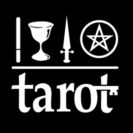Secondary emotions in psychology
Secondary emotions are very interesting; they are the emotional reactions to other emotions, and become a general response in life. Secondary emotions appear in Post traumatic stress disorder (PTSD) as means of responding to, or dealing with, deeper trauma.
Secondary emotions are a means of dealing with life and situations. For example, faking it to make it: trying to be positive and happy even when you don’t feel it. The problem with this approach is that your true feelings are masked, people think you never have problems, and consequently never ask how you are. People with problems are very good at masking their true feelings by using secondary emotions. Unfortunately, the result is more likely to be depression and anger.
For example, we may believe as adults we should not get angry over trivial events and actions of others, but instead we end up with unresolved anger over everything. If you say, “I’m fine.” to any question about your well-being, you may be suppressing feelings.
Secondary emotions in a Tarot reading
I have been experiencing secondary emotions during tarot readings for years, not, I hasten to add, as a result of trauma to readings, but as an actual experience. I feel it in my body as a kind of up=welling seconds after a client walks in, after a few minutes or during the actual reading. This experience is the client’s, and it is a mixture of trying to be positive and upbeat while totally despondent.
Secondary emotions are a learned response, not true feelings as discussed above. These emotions are usually depressive, and, creates a feeling of hopelessness. As a Tarot reader you need to know the difference between primary and seconary emotions.
People commonly try to understand the feelings of others as a means of guaging what they should do or respond. This never works, because most people feel depressed, angry, hopeless, or clueless as to what to do. It is the blind leading the blind. People are also very good at masking their true feelings, so “tuning in” is a depressive experience.
We have a natural ability to be aware of the feelings of others, but we are more likely to experience their secondary emotions. The truth is however, that nobody knows how we really feel, and mistake those secondary feelings as true.
Dealing with emotions in a tarot reading
If as a Tarot Reader you are accessing the Unknown or invisible energies rather than looking at the cards, you will experience these feelings as a matter of course, and you need to acknowledge them as not yours.
Find your own way of talking with the client where these feelings come from (parents, family, partner, work situation), and discuss better ways of dealing with them. The Tower is a common indicator of PTSD.
Ultimately, we need to be in touch with our own feelings rather than people around you. The funny thing is that it is easier to identify other people’s feelings than you own.
Ultimately, we are unknowable to other people, and to ourselves! Ever had the experience of people thinking you are lying when you tell the truth, and then thinking you are telling the truth when you are lying?
One solution is to be more straightforward in expressing your feelings. Give a reason for anger, sadness, etc that evokes sympathy in the listener.
So rather than saying “I’m angry because you didn’t do this”, you can say I am angry with traffic wardens, the neighbours, next door’s dog etc. You will then get a more suitable response.
Healing or the desire to help others, consciously or unconsciously will evoke secondary feelings.
Once the client recognises what is going on, there is usually a sudden feeling of relief.
